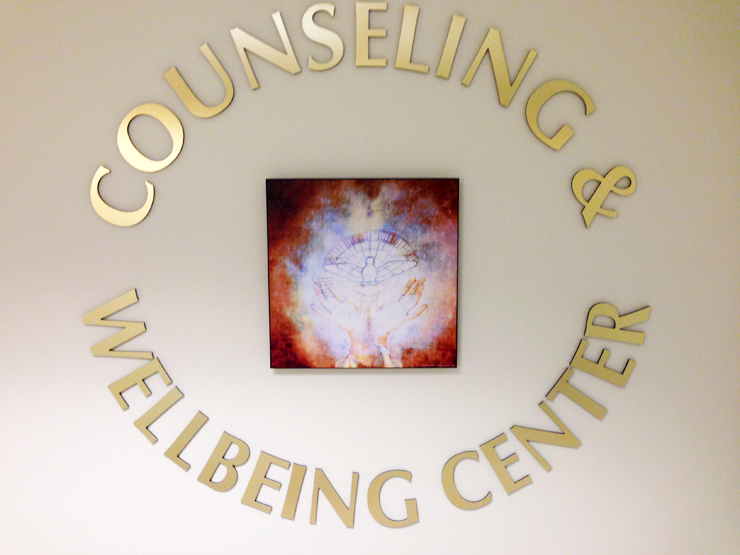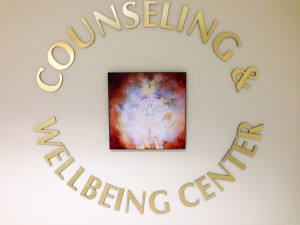

By Alyse Kaminski | Staff Writer
04/12/2018
Seven months ago, I was a first semester freshman in college. Seven months ago, I also found myself at my lowest point, constantly struck with anxiety. Feeling genuine happiness became a rarity and some days I found it too difficult to get out of bed.
I silently dealt with anxiety since sophomore year of high school, never telling my parents or friends about what I was going through. Getting through classes in both high school and the beginning of college was excruciating; I was continually restless with my heart and mind racing for no reason.
Then one day, in that crazy first semester of mine, I could not hold my secret anxiety in anymore. I found myself breaking down while telling my parents everything. They were shocked. How was it possible that their daughter had kept this a secret for so long? How did they miss it?
There are many truths found in these questions: It can be “easy” to put on a mask that everything is okay; everyday people put on that mask to hide what they’re going through because it is easier to do that than to deal with the stigma that surrounds mental health disorders and finally, there will more than likely come a point where the weight of that mask is just too much to carry.
When I stopped wearing my mask for my friends and family, I felt a lot of support from them. I started to wonder if the stigma of mental health disorders actually exists. Until one day, something happened to lead me to believe otherwise. This event made me feel like instead of dealing with my mental health issues, I was making up excuses to be lazy.
This stigma affects everyone that has or had mental health disorders. However, I want to focus on how it influences college students. There are so many of us here at Duquesne that encounter mental unrest everyday whether it be from stress, anxiety, depression, bipolar disorder, etc.
To investigate this further, I interviewed Ian Edwards, a licensed psychologist at Duquesne’s Wellbeing Center. I first asked about how college students can seek help while dealing with the knowledge of the stigma.
Edwards said, “One of the biggest problems associated with the stigma connected with mental illness or psychological distress is the loneliness it breeds. In speaking about the concern, a person feels less lonely, seen and ultimately cared for and loved. It is important for students to know that they are not alone.”
He also explained that at Duquesne, “students can go to a trusted professor or residence life staff member, informing him/her of any struggle with sadness, worry, anxiety, depression, etc.”
From there, I wanted to know more about how the stigma of mental illness can be eliminated from society. I asked Edwards how we can rid our culture of the shame surrounding it.
“Instead of looking at depression or anxiety, for instance, as disorders to be cured, I suggest that people view them as messengers to be heard,” he said. “By so doing, the possibility for healing occurs, as opposed to curing, with the message that the depression communicated initially being heard.”
I agree with Dr. Edwards about healing. From my experience, I know that a “cure” is not necessarily what would help me achieve happiness. I needed to heal.
Finally, I wanted to make students here at Duquesne more aware of the resources that are available for anyone struggling with their mental health. I feel like students know that there are services offered, but they do not really know how to use them.
Dr. Edwards reminded us that, “The Center for Student Wellbeing is comprised of three departments: Recreation Services, Health Services and Counseling Services. Along with Campus Ministry, each department addresses an important aspect of well-being.”
Counseling Services offers a wealth of assets for students. Edwards said, “The professionals [offer] immediate services for those experiencing psychological emergencies, various workshops that promote psychological wellbeing, wellbeing coaching, biofeedback, and case management for those that are seeking services in the community. Counseling Services also has an interfaith meditation room that individuals and groups can use to practice contemplation, prayer and/or meditation.”
For three or four years I was terrified to tell anyone what I was going through. It was a really tough time for me, but through confiding in my family and friends, I began to heal. Even so, I still felt judgement from those who buy into the stigma of mental health disorders. As Edwards says, “stigma can be reduced by honoring transparency, normalizing this experience and providing spaces for such dialogues to occur.” If more of us find the courage to speak up, the stigma surrounding mental health disorders will be defeated little by little.




